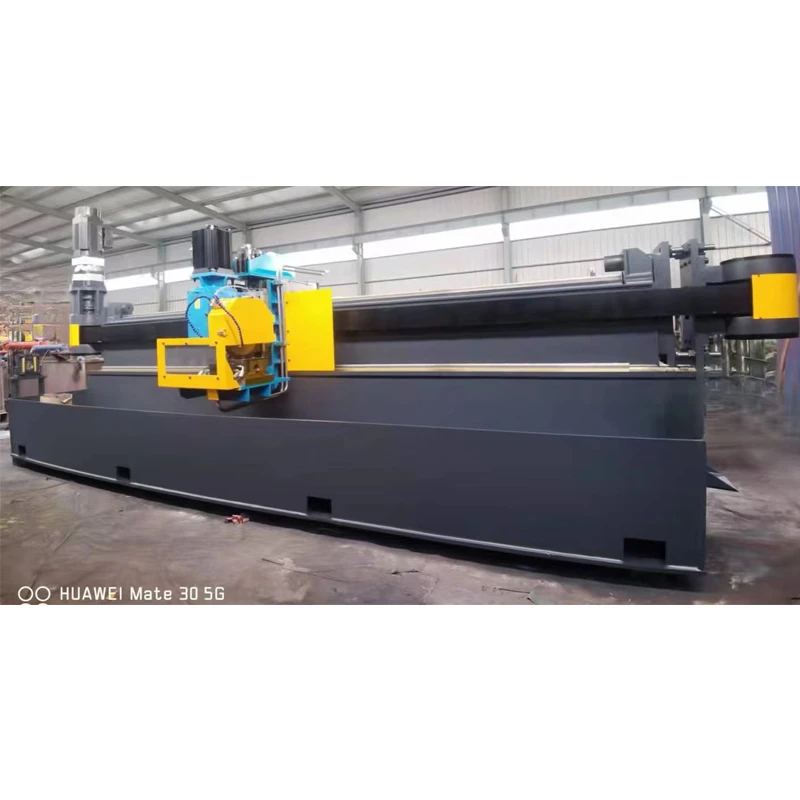Hydraulic Shearing Machine for Efficient Metal Cutting and Shaping Solutions
The Hydraulic Metal Shear Machine Revolutionizing Metal Cutting and Shaping
In the realm of metalworking, precision and efficiency are paramount. Among the numerous tools and machinery available to industry professionals, the hydraulic metal shear machine stands out as a revolutionary device that enhances productivity while ensuring high-quality results. This article aims to delve into the functions, advantages, and applications of hydraulic metal shear machines, showcasing their significance in modern manufacturing processes.
Understanding Hydraulic Metal Shear Machines
At its core, a hydraulic metal shear machine is designed to cut metal sheets and profiles with precision. The machine employs a hydraulic system that generates significant force, allowing it to cut through various metals, including steel, aluminum, and other alloys. Unlike traditional mechanical shear machines, hydraulic shears utilize hydraulic cylinders to operate the cutting blade, providing a more controlled and powerful cutting action.
The basic components of a hydraulic metal shear machine include the cutting blade, hydraulic cylinders, control panel, and the frame. The blades are often made of high-carbon steel to ensure durability and sharpness, while the hydraulic system is engineered to handle the high pressures required for effective cutting.
Advantages of Hydraulic Metal Shear Machines
1. Precision Cutting One of the primary advantages of hydraulic shears is their ability to achieve precise cuts. The hydraulic system provides consistent cutting force, allowing for clean edges and minimizing material wastage. This precision is critical in industries where exact measurements are essential.
2. Versatility Hydraulic metal shear machines can handle various thicknesses and types of materials, making them versatile tools in metal fabrication. From thin sheets to thicker plates, these machines can be adjusted to accommodate different cutting requirements.
3. Increased Efficiency The speed and power of hydraulic systems enhance the overall cutting speed. Operators can complete tasks more quickly compared to manual or mechanical alternatives, increasing productivity and reducing lead times in manufacturing processes.
4. Ease of Use Modern hydraulic shears often come equipped with user-friendly controls, allowing operators to set parameters quickly and efficiently. This simplicity reduces the learning curve for new operators and enhances workplace safety.
hydraulic metal shear machine

5. Safety Features Safety is a major concern in metalworking environments. Hydraulic metal shear machines are designed with various safety features, such as automatic shut-off systems, protective guards, and sensors that prevent accidental operation, ensuring a safer working environment.
Applications of Hydraulic Metal Shear Machines
The applications of hydraulic metal shear machines are vast and diverse. They are widely used in industries such as
- Automotive Manufacturing In the automotive industry, hydraulic shears are used to cut components from sheet metal, including body panels, brackets, and structural parts. The precision and speed of these machines contribute to the high standards required in vehicle production.
- Aerospace Engineering The aerospace sector demands exacting standards for parts made from lightweight and high-strength materials. Hydraulic shears meet these demands, enabling manufacturers to produce custom parts quickly and efficiently.
- Construction In the construction industry, hydraulic shears are used to handle metal sheets for roofing, siding, and structural reinforcements. Their ability to cut various metal types makes them a valuable asset on construction sites.
- Metal Fabrication Shops Service centers that specialize in metal fabrication rely heavily on hydraulic shears for work such as metal sign creation, custom fabrication projects, and producing parts for machinery.
Conclusion
The hydraulic metal shear machine is a critical tool in the metalworking industry, driving efficiency, precision, and versatility. As technology continues to advance, these machines are becoming even more sophisticated, incorporating features such as CNC (Computer Numerical Control) for automated cutting processes. The future of metal cutting and shaping is undoubtedly intertwined with the capabilities of hydraulic shear machines, underscoring their importance in the ever-evolving landscape of manufacturing. Whether in automotive, aerospace, construction, or fabrication, these machines are helping to shape the future of production, one precise cut at a time.
-
High Frequency Straight Seam Welded Pipe Production Line-BzZhou Xinghua Machinery Equipment Manufacturing Co., LTD.|line pipe steel&welded gas pipeNewsJul.30,2025
-
High Frequency Straight Seam Welded Pipe Production Line-BzZhou Xinghua Machinery Equipment Manufacturing Co., LTD.|High Precision&Automated SolutionsNewsJul.30,2025
-
High Frequency Straight Seam Welded Pipe Production Line - BzZhou Xinghua Machinery Equipment Manufacturing Co., Ltd.NewsJul.30,2025
-
High Frequency Straight Seam Welded Pipe Production Line-BzZhou Xinghua Machinery Equipment Manufacturing Co., LTD.|Precision Welding, High EfficiencyNewsJul.30,2025
-
High Frequency Straight Seam Welded Pipe Production Line|BzZhou Xinghua|Precision Welding&EfficiencyNewsJul.30,2025
-
High Frequency Straight Seam Welded Pipe Production Line - BzZhou Xinghua|Precision Engineering&EfficiencyNewsJul.30,2025


